Steps to choosing a mattress
Choosing a new mattress isn't always easy, but the below will certainly guide you.
Consider the following:
- Budget
- Degree of firmness
- Ideal temperature
- Mattress materials
- Sleeping position
- If you're sleeping alone or with a partner
We expand upon each of these sections below.
Budget
Your budget will play a big role in your choice of mattresses 💰
Some mattresses, like the Tempur mattresses, are known for their exceptional quality.
But they also come with a hefty price tag, and they certainly won't be suitable for everyone.
Quality choices at affordable prices
There are many mattresses at more affordable rates that are of very high quality.
Most of the bed-in-a-box mattresses that we recommend, like Emma, Nectar, and Eve, are more affordable choices that don't compromise on quality.
Ultimately, you're looking for a mattress that offers you the best quality at the best price.
Durability
Always keep the lifespan of your mattress in mind.
Higher quality mattresses have better durability and are likely to last a long time 🗓
You're aiming to keep your mattress for about 5 to 10 years, so it's worth spending a little more to get a mattress that will last that long.
Should anything go wrong in that period, your warranty should cover you.
Ideal degree of firmness
One of the first things you'll undoubtedly focus on is your desired degree of firmness.
There is no "correct" degree of firmness.
Some people may prefer a firmer mattress, while others prefer softer mattresses.
Many opt for the in-between and choose a medium-firm bed.
Support and stability
You need to pay attention to support and stability, which is essential for healthy spinal alignment and preventing back and neck pains.
Most high-quality mattresses on the market - and certainly the ones we recommend - offer sufficient support and stability regardless of their firmness level.
They may even feature upper comfort layers to provide additional cushioning to a firm and stable base.
But, your body weight can have some influence on what level of firmness you need.
In general, most people over 90 kg (198 lbs) would benefit from choosing firmer mattresses as these can offer slightly more stability. But, the mattress should never be too firm as this hinders comfort.
Lighter-weight people will do just fine on a soft mattress. But a bed should never be too soft as this can result in a hollow back and lead to lower back pain.
Sleeping position
Your sleeping position will also affect the firmness that's best for you.
Back and stomach sleepers can do well on a firm mattresses, while side sleepers should opt for slightly softer mattresses.
We'll elaborate on this in more detail further down.
Our firmness scale
Most bed-in-a-box mattresses are described as medium-firm. They have been designed to suit most people, regardless of body weight and preferred sleeping position.
That said, as we have discovered in our reviews, different people will still interpret the firmness and comfort levels differently.
This is why we have developed the Sleep Hero firmness scale.
This scale runs from 1 - 10, where 1 is the softest and 10 the firmest.
We use this to evaluate the degree of firmness in our reviews, which will give you a good indication of a mattress's general firmness and help you immediately exclude mattresses that do not match your requirements.
To choose the right level of firmness, have confidence in your judgment about what feels best.
Ultimately, your mattress needs to be comfortable so you can enjoy a good night's sleep.
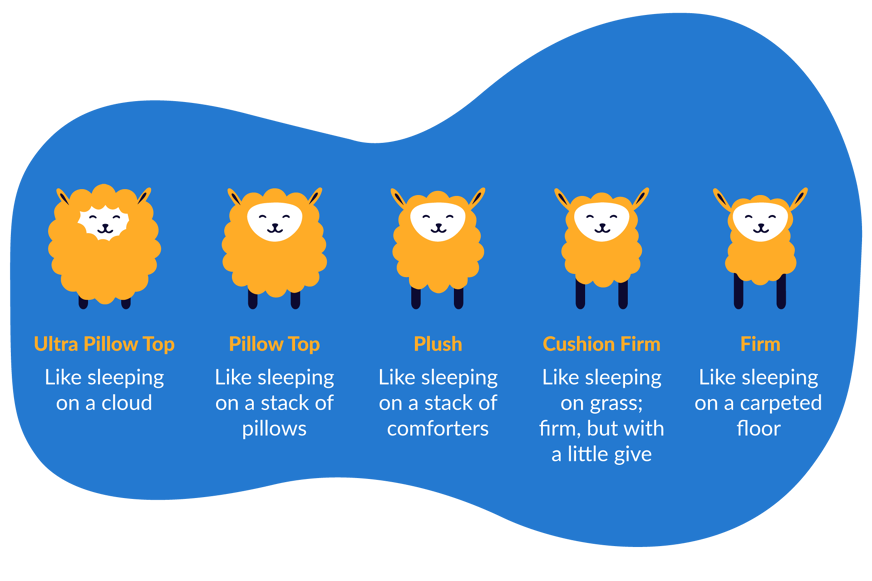
Ideal temperature
Some mattresses sleep warmer than others 🔥
This will significantly affect your comfort and quality of sleep.
Whether a mattress sleeps warmer or cooler will depend on a range of factors, including the materials used and their composition.
If you quickly feel cold at night
If you tend to feel cold at night, we would generally recommend choosing a memory foam mattress.
These tend to store more body heat than other mattress materials, creating a pleasant feeling of warmth.
But, you still want a mattress that isn't too clammy, so it's important to pay attention to the overall breathability of the mattress.
Many modern-day memory foam mattresses are combined with breathable covers to allow for better air circulation, which prevents that clammy feeling.
If you quickly feel hot at night
If you easily feel hot and prefer a cooler sleep, we recommend choosing mattresses made of more breathable materials, such as natural latex or pocket springs.
You can always add pillows or quilts to achieve the optimal temperature.
If you are a very heavy sweater, though, it's best to stick to spring mattresses as these allow for the greatest amount of airflow and tend to stay the coolest.
Different mattress materials
The material a mattress is made from affects both its firmness and its temperature regulation abilities.
There are many different types of mattresses available.
There are also many cheap mattresses made of pure polyether foam or air and water mattresses. We would not recommend these for daily use 🚫
The best and most common types of mattresses are cold foam, latex foam, memory foam, and spring mattresses.
Cold foam mattresses
A cold foam mattress demonstrates high point elasticity and pressure relief capabilities.
It is the ideal mattress for people who change their sleeping position quite often and generally sleep quite restlessly.
A cold foam mattress is also better suited to people who prefer a warmer sleep.
They exhibit low motion transfer, meaning that movements do not easily pass through the mattress. Thus, they are also a good choice for couples.
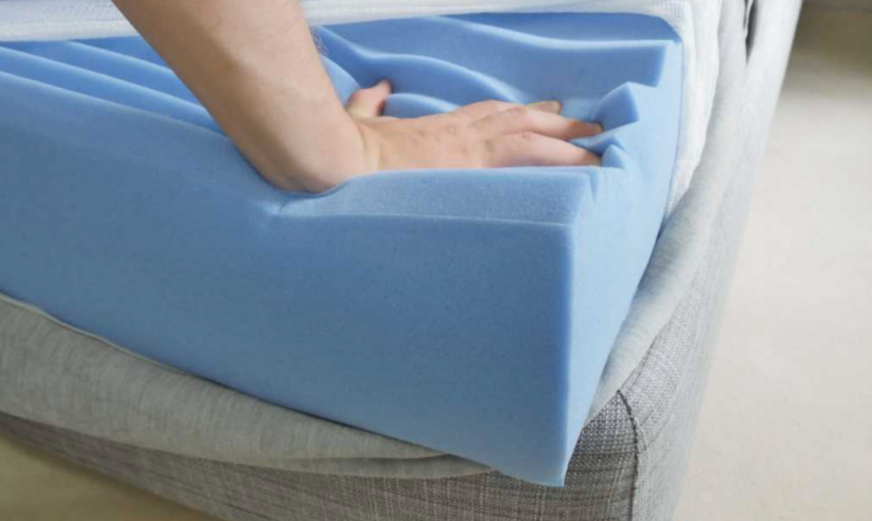
Latex mattresses
Latex mattresses are a good choice for side and stomach sleepers, though they may be too soft for pure back sleepers.
Latex also demonstrates high point elasticity and body adaptability and is often recommended to help relieve back pain.
Natural latex is a good choice if you're looking for a green mattress made of natural materials.
While most latex mattresses now feature covers or other types of foams to make them safe for people with latex allergies, we would still recommend avoiding latex mattresses if you have a severe latex allergy.
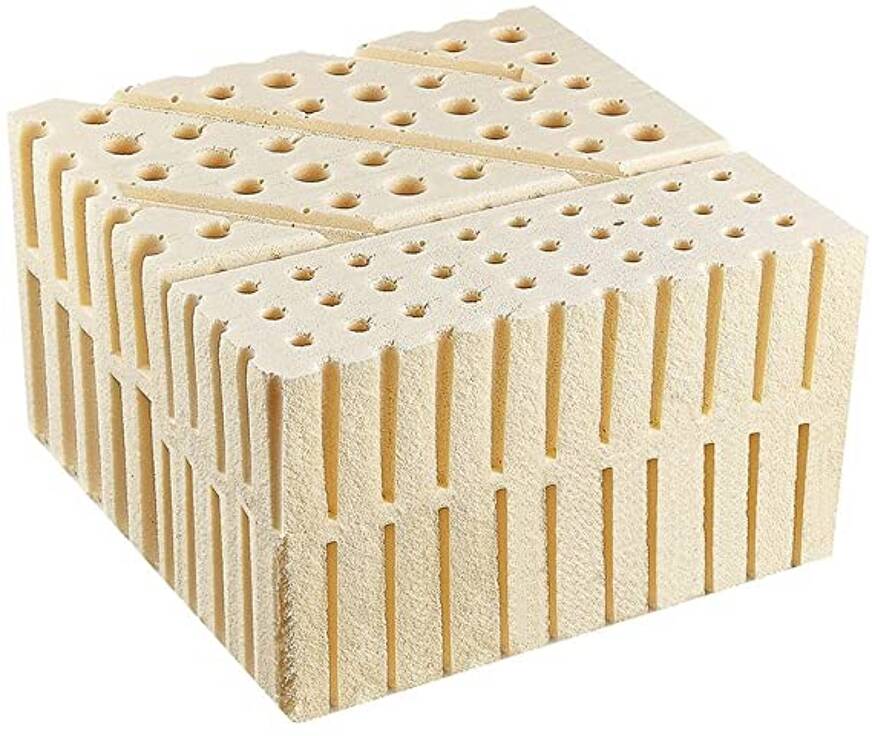
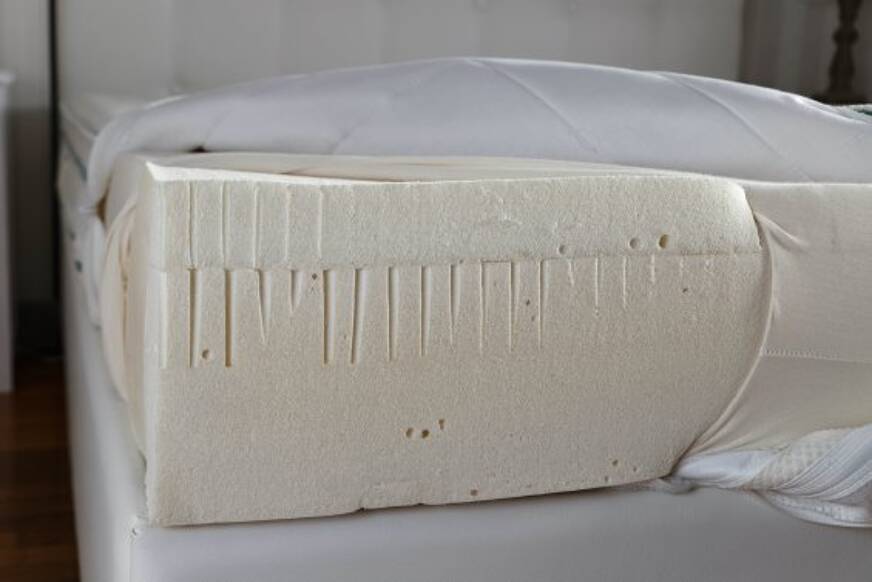
Innerspring mattresses
Innerspring mattresses tend to be firmer and offer good stability and support.
This makes them an excellent choice for back sleepers and stomach sleepers.
But, they often don't allow for enough sinkage for side sleepers, resulting in back pain.
Spring mattresses also offer the coolest sleep. The space between the springs creates natural ventilation channels, allowing for more airflow and greater breathability 💨
There are many types of spring mattresses available, and many of them, like open coil mattresses, are cheap and inferior products.
We would recommend opting for pocket sprung mattresses as a high-quality choice.


Memory foam mattresses
Memory foam mattresses [1] have excellent point elasticity, allow for good relief of pressure points, and offer that body-contouring comfort 🤗
These are regularly recommended as orthopaedic mattresses and are a good choice for a bad back.
Memory foam mattresses demonstrate excellent motion isolation, making them a good choice for couples.
Some mattresses feature a cushioning top layer of memory foam for comfort while using more stable foams as the base. These are good options as stability is so important.
Memory foam tends to retain more body heat than other types of mattresses, though, making them much warmer and unsuitable for heavy sweaters.
Moving around on the mattress can also be a little more difficult as the foam adapts to your body so well. This is great for comfort and pressure relief, but less than ideal for restless sleepers.
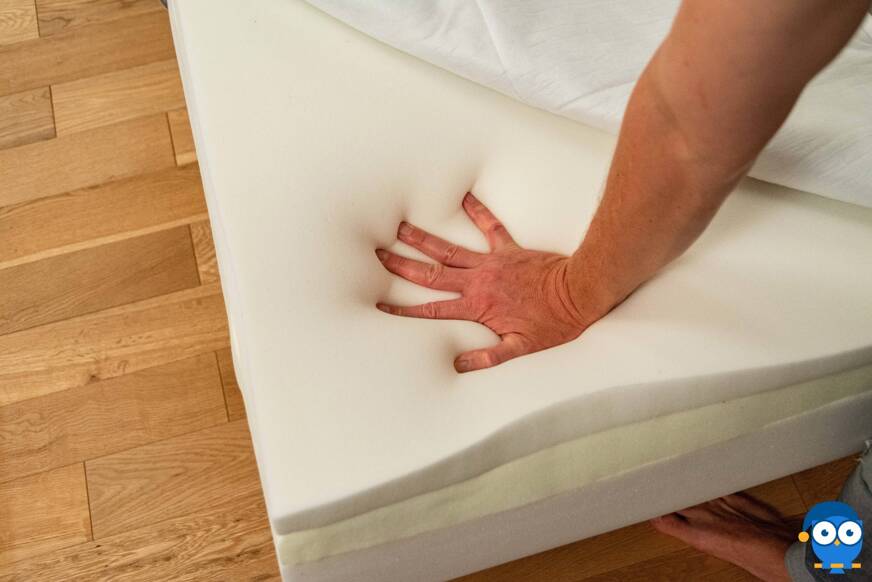
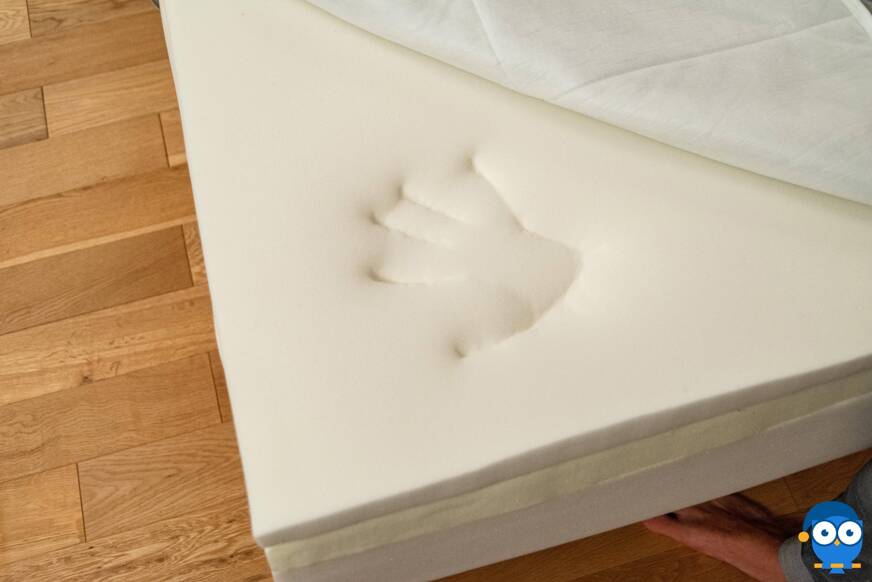
An overview of mattress materials
| Memory foam mattress | Cold foam mattress | Latex mattress | Innerspring mattress | |
| Sleeping position | Any sleeping position | Any sleeping position | Side and stomach sleepers | Stomach and back sleepers |
| Sleep behaviour | Calm | Mostly restless | Calm and restless | Calm |
| Sleeping climate | Warmer due to heat storage | Warmer due to heat storage | Cooler due to ventilation | Cooler due to ventilation |
| Feeling of lying down | Firm but with a soft feeling. High body adaptability and point elasticity. | Medium-firm. Good body adaptability and point elasticity. | Medium-firm with softness. Good adaptability to body contours. | A relatively firm lying sensation with minimal sinkage into the mattress. |
| Health | For back problems and orthopaedic complaints. | Recommended for back problems. | Recommended for back problems. | Not recommended for back problems. |
Preferred sleeping position
Your preferred sleeping position will significantly impact your choice of mattress.
Always keep in mind that your ideal mattress will support the natural curvature of your spine.
Many high-quality mattresses are also divided into contour zones, allowing your body to sink in more deeply where it's heavier and be more supported where it's lighter.
This will help your spine remain in its correct alignment 📏
The firmness of the mattress and your body weight greatly influence how your body sinks into the bed.
Most high quality-mattresses will be suitable for a wide range of sleeping positions, but the following advice will also guide you.
Side sleepers
If you sleep on your side, you will need to be able to sink into the mattress much more deeply than someone who only sleeps on their back or stomach.
This additional sinkage will allow your spine to remain in healthy alignment.
Softer mattresses are the preferred choice for side sleepers.
Back and stomach sleepers
If you sleep on your stomach or your back, you'll require a little more support to prevent the formation of a hollow back.
Instead of sinking in, the hips require a little more lift to aid healthy spinal alignment.
The optimal mattress for back and stomach sleepers is slightly firmer.

Sharing your bed with a partner
Is the mattress only for you, or are you sharing your bed with a partner?
Of course, if it's only for you, then you can make all the executive decisions and choose a mattress that's perfect for you.
But if you're sharing the mattress with your partner, you'll need to agree on the right degree of firmness and optimal temperature.
This isn't always easy.
To help you, we've created a guide to choosing the best mattresses for couples 👩❤️👨
Customisable mattresses
Some modern mattress brands have a unique solution for couples.
They offer customisable mattresses, where you can specify the degree of firmness for each half of the bed.
In this way, you and your partner can both enjoy the perfect degree of firmness.
The mattresses are also expertly assembled, so they're as sleek, stylish, and comfortable as the rest.
Two separate mattresses
If you and your partner have vastly different body sizes or sleeping requirements, then you may wish to invest in two separate single mattresses instead.
In this way, both partners can choose the mattress that's perfect for them.
How do I know if I've chosen the right mattress?
One of the best things about buying your mattress online is that you can try the bed at home during the risk-free trial period.
These trial periods range from 30 to 100 days or even longer, depending on the manufacturer.
Nectar, for example, gives you a full 365 days to try the mattress!
This gives you enough time to find out if the mattress is right for you.
And if you're not completely satisfied, you can return the mattress and receive a full refund 💵
But how do you test the mattress?
The mattress that suits you will meet the following criteria:
- You feel comfortable and relaxed, regardless of which position you sleep in.
- You won't feel like you're sleeping in a bowl (the so-called "hammock effect", which is detrimental to your spine).
- You can easily slide your hand under the small of your back.
- You can't push your elbows into the mattress too deeply.
Don't give up on your new mattress too easily.
It takes a minimum of ten days to adapt to a new mattress, especially if the material is different from what you had before.
Some people may need up to three weeks to become accustomed to their new mattress and form a good opinion.
So take your time.
After all, your new mattress will be your source of comfort for a long time to come.
How do I protect my new mattress?
If you've chosen a new mattress and you're happy with it, then you'll want to protect your purchase.
After all, if you've chosen a high-density, high-quality mattress that will last you a long time, you want to take good care of it.
Here a few tips:
- If you've purchased a mattress that requires flipping, make sure you flip your mattress and rotate it regularly (once every 3-6 months).
- If you've purchased a non-flip mattress, rotate it at 180° regularly (once every 3-6 months).
- If you've purchases a mattress with a removable and machine-washable cover (which we'd recommend), wash this cover regularly.
- Invest in a high-quality waterproof mattress protector to further safeguard your mattress against stains, spills, dirt, and bacteria.
- Wash your mattress protector regularly.
- Wash your bedding once a week - or at least once every two weeks 🛁
- Air your mattress regularly.
- Invest in a good quality bed frame that allows for air circulation (which prevents mould).
If you take good care of your mattress, it will provide you with years of comfort and support.
Conclusion
While the right mattress for you is essentially a matter of personal preference, we can help you find the best one.
Always consider the following:
- Budget
- Degree of firmness
- Ideal temperature
- Mattress materials
- Sleeping position
- If you're sleeping alone or with a partner
While these factors will act as guidelines, the only way to see if a mattress is right for you is by trying it out.
That's why we always recommend making use of the risk-free trial periods that come standard with most bed-in-a-box mattresses.













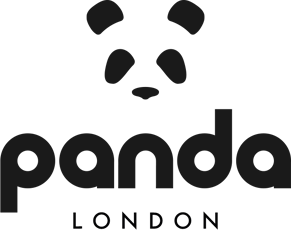
 Jennifer Lynch
Jennifer Lynch

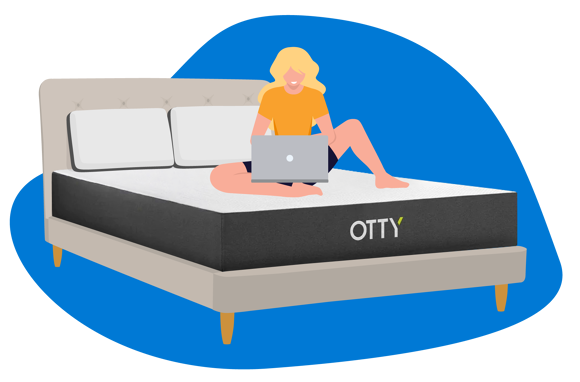




Alternatively, message us directly via the Contact Us page.